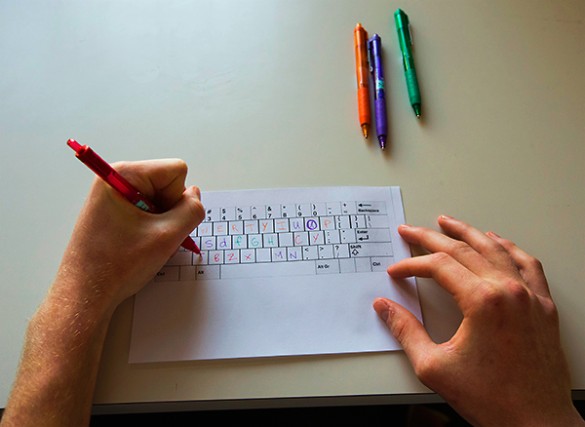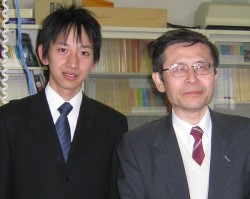When you are typing away at your computer, you don’t know what your fingers are really doing.
That is the conclusion of a study conducted by a team of cognitive psychologists at Vanderbilt and Kobe universities. It found that skilled typists can’t identify the positions of many of the keys on the QWERTY keyboard and that novice typists don’t appear to learn key locations in the first place.
“This demonstrates that we’re capable of doing extremely complicated things without knowing explicitly what we are doing,” said Vanderbilt University graduate student Kristy Snyder, the first author of the study, which was conducted under the supervision of Centennial Professor of Psychology Gordon Logan.

A description of the research will appear in an upcoming issue of the journal Attention, Perception & Psychophysics, which recently posted it online.
The researchers recruited 100 university students and members from the surrounding community to participate in an experiment. The participants completed a short typing test. Then, they were shown a blank QWERTY keyboard and given 80 seconds to write the letters in the correct location. On average, they typed 72 words per minute, moving their fingers to the correct keys six times per second with 94 percent accuracy. By contrast, they could accurately place an average of only 15 letters on a blank keyboard.
The fact that the typists did so poorly at identifying the position of specific keys didn’t come as a surprise. For more than a century, scientists have recognized the existence of automatism: the ability to perform actions without conscious thought or intention. Automatic behaviors of this type are surprisingly common, ranging from tying shoelaces to making coffee to factory assembly-line work to riding a bicycle and driving a car. So scientists had assumed that typing also fell into this category, but had not tested it.

What did come as a surprise, however, was a finding that conflicts with the basic theory of automatic learning, which suggests that it starts out as a conscious process and gradually becomes unconscious with repetition. According to the widely held theory – primarily developed by studying how people learn to play chess – when you perform a new task for the first time, you are conscious of each action and store the details in working memory. Then, as you repeat the task, it becomes increasingly automatic and your awareness of the details gradually fades away. This allows you to think about other things while you are performing the task.
Given the prevalence of this “use it or lose it” explanation, the researchers were surprised when they found evidence that the typists never appear to memorize the key positions, not even when they are first learning to type.
“It appears that not only don’t we know much about what we are doing, but we can’t know it because we don’t consciously learn how to do it in the first place,” said Logan.
Evidence for this conclusion came from another experiment included in the study. The researchers recruited 24 typists who were skilled on the QWERTY keyboard and had them learn to type on a Dvorak keyboard, which places keys in different locations. After the participants developed a reasonable proficiency with the alternative keyboard, they were asked to identify the placement of the keys on a blank Dvorak keyboard. On average, they could locate only 17 letters correctly, comparable to participants’ performance with the QWERTY keyboard.
According to the researchers, the lack of explicit knowledge of the keyboard may be due to the fact that computers and keyboards have become so ubiquitous that students learn how to use them in an informal, trial-and-error fashion when they are very young.

“When I was a boy, you learned to type by taking a typing class and one of the first assignments was to memorize the keyboard,” Logan recalled.
Co-authors on the study are Vanderbilt research analyst Jana Ulrich and Yuki Ashitaka and Hiroyuki Shimada at Kobe University in Japan. The research was funded by National Science Foundation grants BCS 0957074 and BCS 1257272.